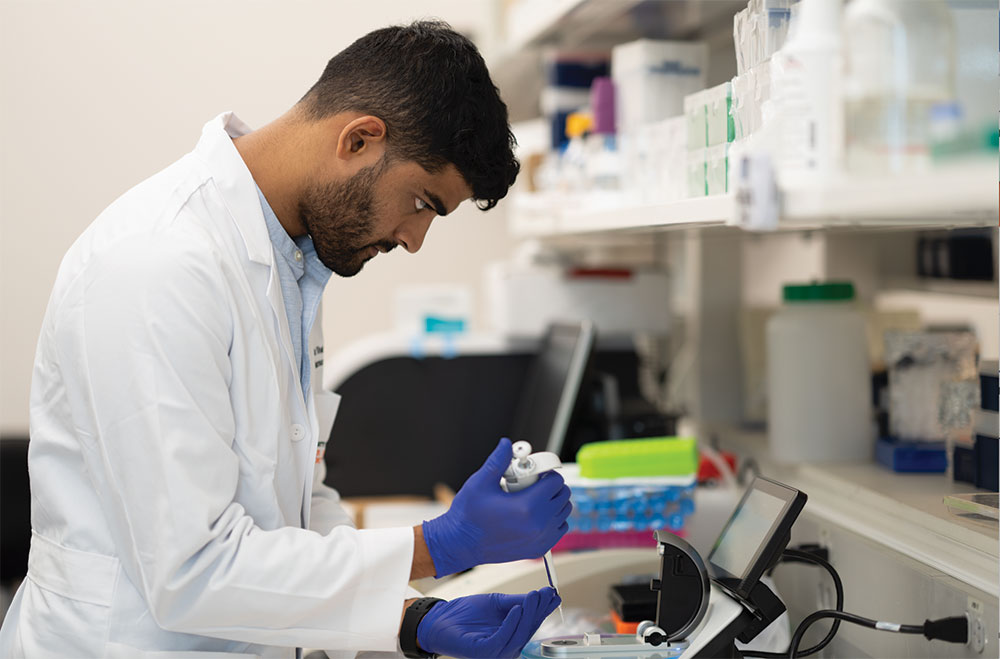It can be tempting to blame ancestors for inherited health risks. Consider a new study showing that fragments of a retrovirus that became part of the human genome approximately five to six million years ago play a role in the proliferation and progression of glioblastoma.
Glioblastomas are the most aggressive primary brain tumors, leaving patients with a median survival rate of 14 months, despite conventional surgical resection and chemoradiation treatments. In a quest to understand their proliferation, resistance and recurrence, physician-scientists including Ashish H. Shah, M.D., collaborated to find new ways to treat the deadly brain tumors.
Several studies have suggested that human endogenous retrovirus-K (HML-2) may play a role in oncogenesis through various mechanisms, but definitive answers remain elusive on the presence and function of HML-2 in glioblastoma.

Dr. Shah and his study colleagues identified that the evolutionary dormant retrovirus from millions of years ago contributes to brain tumor formation.
“Researchers have shown this viral particle is actually overexpressed in certain cancers, but it has never really been described in brain tumors like glioblastoma,” said Dr. Shah, who is also an assistant professor of neurosurgery and director of clinical trials and translational research for Sylvester’s Brain Tumor Initiative. “Our lab found that HML-2, a subtype of HERV-K, contributes to brain tumor formation. We demonstrated for the first time that this virus, when reactivated, plays a role in defining the stem-cell state of high-grade gliomas, promoting an aggressive form of cancer.”
Dr. Shah said HML-2 viral fragments, long believed to be innocuous junk DNA, while not infectious, are not uncommon. Eight percent of our genome is made up of these viral sequences, including many other human endogenous viruses that entered our genome.
HML-2 makes glioblastomas more challenging to treat, explained Dr. Shah. The particle promotes pluripotency, or the ability of cancer stem cells to differentiate into many different types of cells or tissues within the body. “That is a hallmark of cancer,” said Dr. Shah, lead investigator of the study published online in the Journal of Clinical Investigation. Understanding the challenges that HML-2 presents, Dr. Shah’s study proposes that gene therapy may be one possibility for targeting glioblastoma. The study also suggests that existing antiretroviral agents may be a promising option.